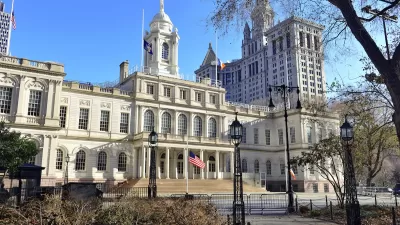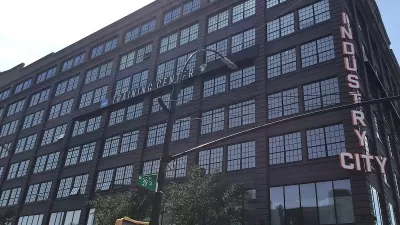Diners are part of social and cultural landscape of New York City, but many are closing as owners contend with increasing development pressures.

Stefanos Chen reports on the future of the iconic New York City diner, with one estimate suggesting about 13 are closing shop each year. "While their disappearance has been lamented for years, diners along the margins of Manhattan and in parts of other boroughs previously thought impervious to redevelopment are closing because of increasing rents and enticing offers that are hard to pass up."
In one case, owners of the Frontier Diner in Manhattan struck a deal with a developer to lease the land instead of selling it, reports Chen. Some owners are trying new strategies to survive and adapt to the times, such as diversifying menus and offering food delivery.
Others say they will hold out as long as possible. Louis Gritsipis says he will not sell his diner, 42nd Street Pizza, located near the new Hudson Yards development. "He pays almost $70,000 in annual property taxes, while many of his new high-rise neighbors receive tax abatements. He has no desire to stop working, he said, and the cost of starting a new business would be too high, even if he were to sell the building," writes Chen.
FULL STORY: New York’s Vanishing Diners

Planetizen Federal Action Tracker
A weekly monitor of how Trump’s orders and actions are impacting planners and planning in America.

Congressman Proposes Bill to Rename DC Metro “Trump Train”
The Make Autorail Great Again Act would withhold federal funding to the system until the Washington Metropolitan Area Transit Authority (WMATA), rebrands as the Washington Metropolitan Authority for Greater Access (WMAGA).

DARTSpace Platform Streamlines Dallas TOD Application Process
The Dallas transit agency hopes a shorter permitting timeline will boost transit-oriented development around rail stations.

Supreme Court Ruling in Pipeline Case Guts Federal Environmental Law
The decision limits the scope of a federal law that mandates extensive environmental impact reviews of energy, infrastructure, and transportation projects.

Texas State Bills to Defund Dallas Transit Die
DART would have seen a 30% service cut, $230M annual losses had the bills survived.

Bikeshare for the Win: Team Pedals to London Cricket Match, Beats Rivals Stuck in Traffic
While their opponents sat in gridlock, England's national cricket team hopped Lime bikes, riding to a 3-0 victory.
Urban Design for Planners 1: Software Tools
This six-course series explores essential urban design concepts using open source software and equips planners with the tools they need to participate fully in the urban design process.
Planning for Universal Design
Learn the tools for implementing Universal Design in planning regulations.
Roanoke Valley-Alleghany Regional Commission
City of Mt Shasta
City of Camden Redevelopment Agency
City of Astoria
Transportation Research & Education Center (TREC) at Portland State University
US High Speed Rail Association
City of Camden Redevelopment Agency
Municipality of Princeton (NJ)





























